Want to learn how to attract hummingbirds to your garden? This guide will show you which flowers and feeders work best!
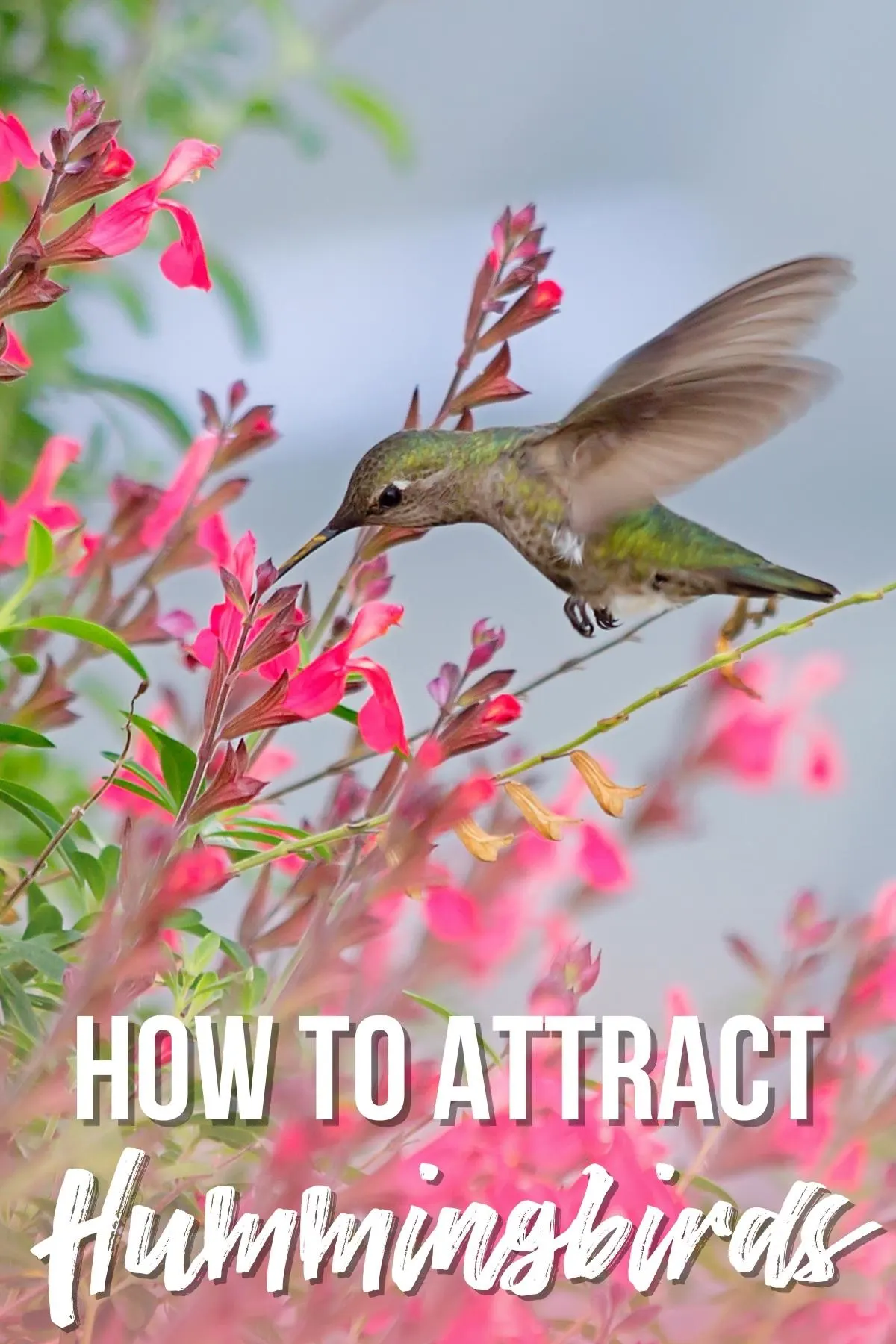
There's something magical about witnessing a hummingbird flitting about the garden. In this guide, you'll learn how to attract hummingbirds with the right nectar, plants and baths to entice these delicate creatures to stick around longer!
We live in the Pacific Northwest, and there are two types of hummingbirds in our area. The most common are Anna's hummingbirds, who stick around all year. In the summer, we also get Rufous hummingbirds, but I don't see them quite as often.
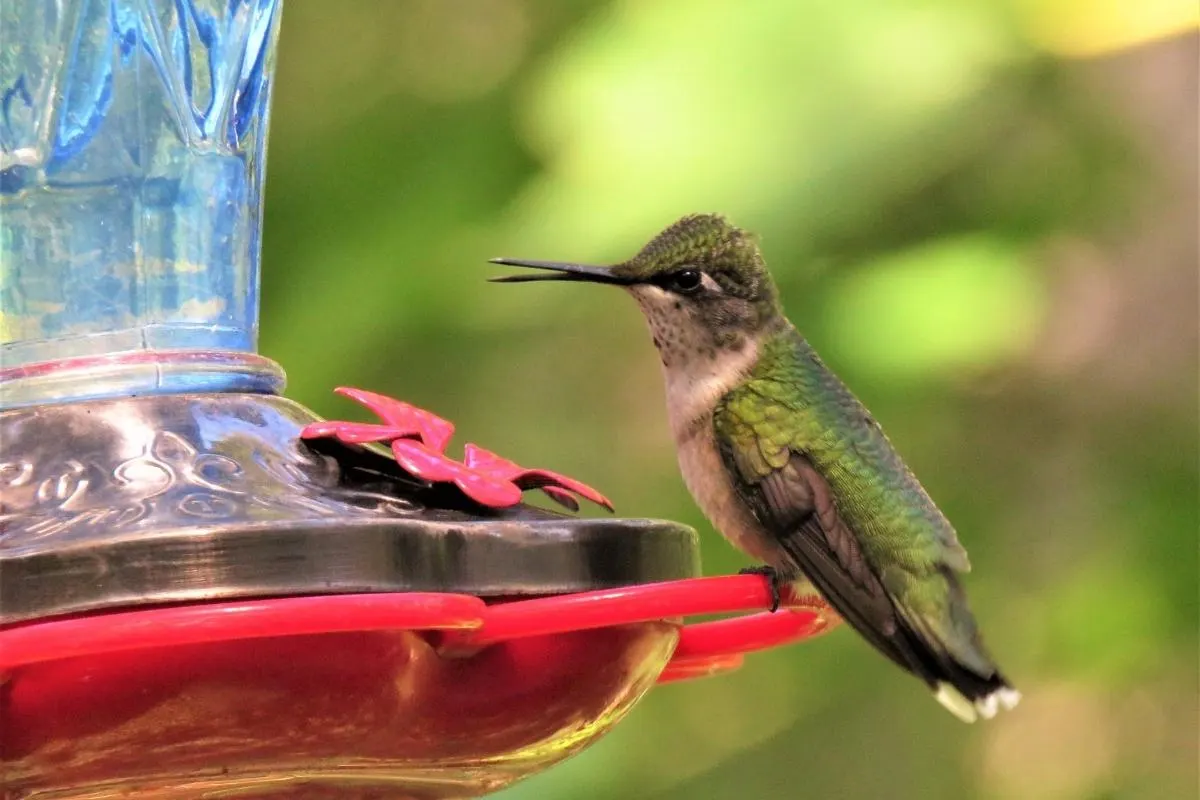
I love watching them swoop down from the trees for a drink at the feeder, and battling for territory in midair. Once everything starts to bloom in spring, they ignore the feeder and snack from the flowers around the garden instead. Don't worry, they'll be back to your sugary water soon enough!
This post contains affiliate links for your convenience. Purchases made through these links may earn me a small commission at no additional cost to you.
Flowers that Attract Hummingbirds
Hummingbirds love flowers with nectar, and adding the right plants will draw them to your garden. Not only are these winged creatures pretty and fun to watch, but they're essential pollinators too!
Hummingbirds are attracted to anything that is red, yellow, or orange. That's why most of the hummingbird feeders you see in stores are red. They also prefer flowers with long, tubular blossoms. Their pointy beaks make it easy for them to reach the nectar at the bottom that others may leave behind.
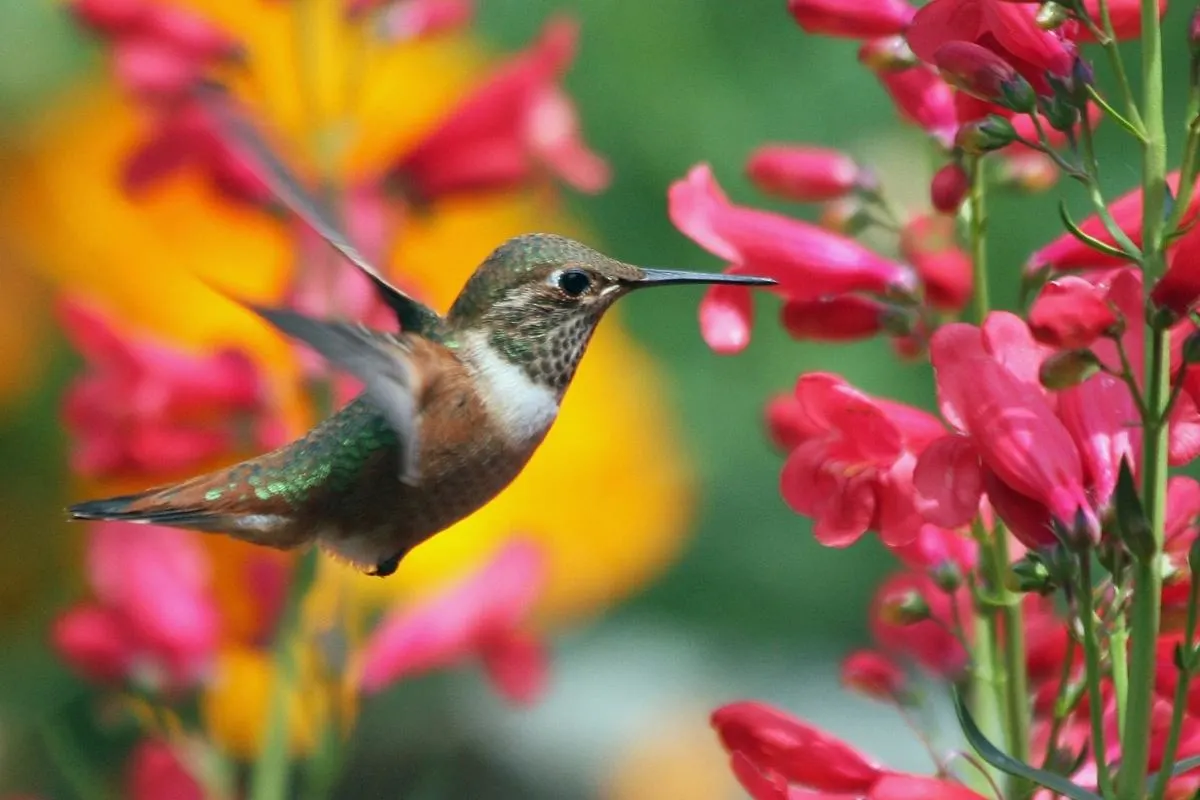
Here are some common flowers that attract hummingbirds. This isn't an exhaustive list, but they're some of the most popular. Check the tag when purchasing plants, because many will indicate if they're hummingbird friendly!
Be sure to select the right plants for your growing area and sunlight levels, and keep them watered by installing a drip irrigation system. A dry plant won't produce sufficient nectar, and the hummingbird may stop visiting it.
Hummingbird Flower Placement
Hummingbirds prefer having a variety of places to feed. Flowering vines on a trellis or arbor gives them a higher vantage point, while a window planter box gives you a closer look.
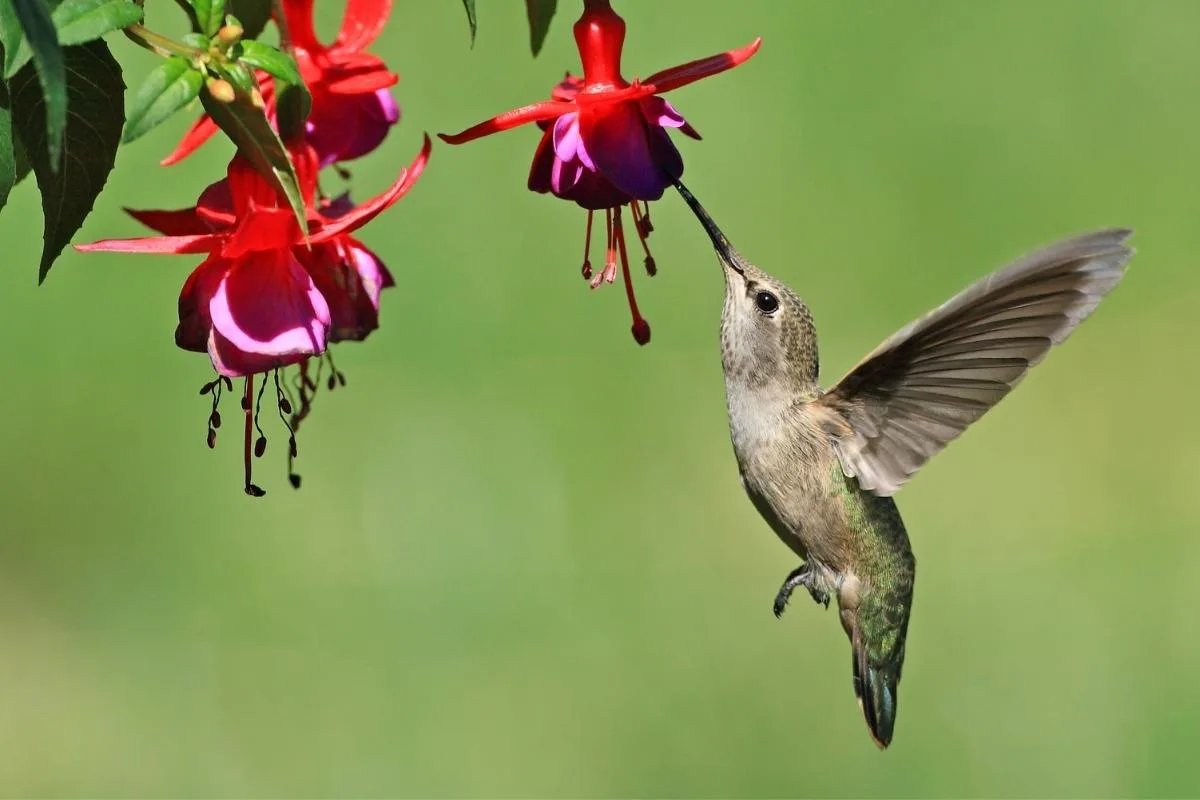
We have fuchsia growing in this planter box on our front porch, and hummingbirds are always feeding from it when I open the door! We also have a few in hanging baskets off our deck that are frequently visited.
Best Hummingbird Feeder
The best hummingbird feeder has:
- Red accents to attract the birds,
- Plenty of feeding ports to prevent fighting,
- Easy to clean, and
- Avoid models with yellow "flowers" around the holes, which will attract bees instead!
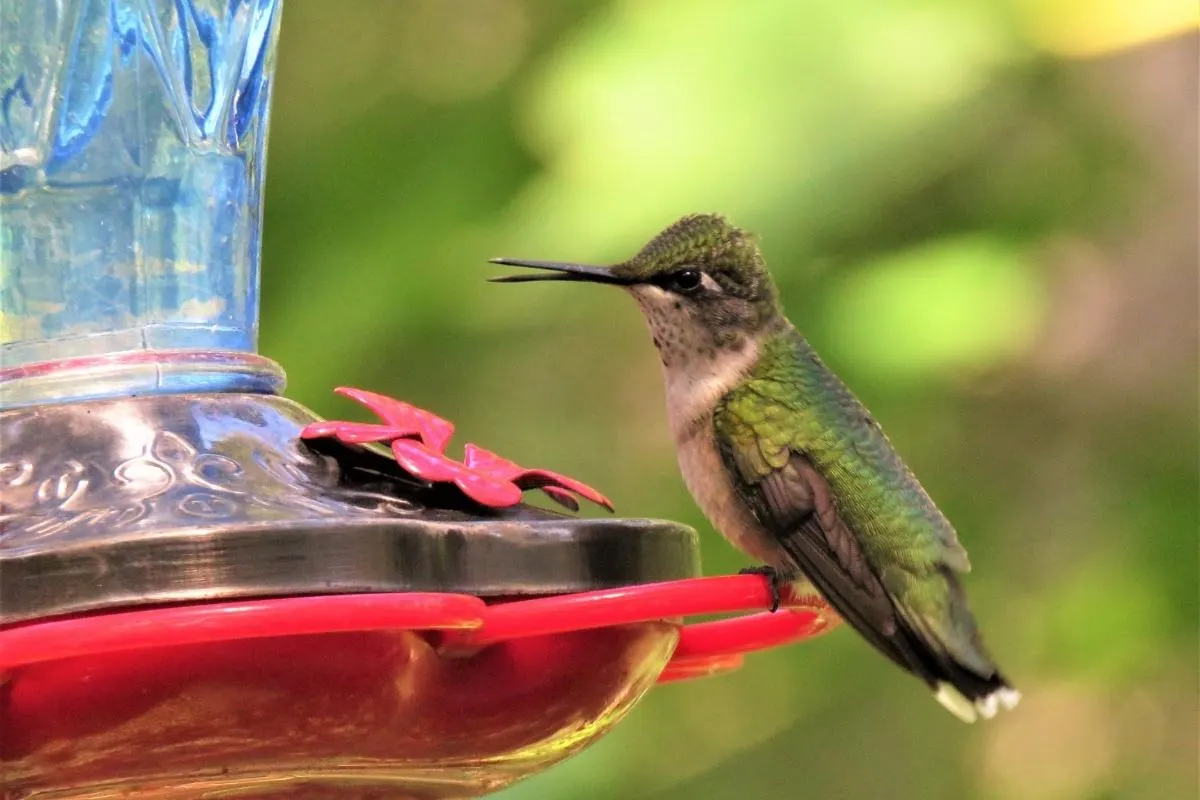
I've tried the bottle types of hummingbird feeders, but never had much success with them. These saucer style ones are easier to clean, and work so much better! The ring around the outside allows hummingbirds to rest while they drink.
For a close-up view of your hummingbirds, try this window mount version. I have one stuck to our kitchen window, and it's always a pleasant surprise to see them perched inches away while I'm doing the dishes! You can even see their long tongues darting in and out to suck up the sugar water.
 How to Make Hummingbird Nectar
How to Make Hummingbird Nectar
Making your own hummingbird juice is cheaper and better for the birds. You can even store extra in the refrigerator so you always have more on hand!
- Mix four parts water and one part sugar in a pot.
- Bring sugar water mixture to a boil.
- Allow to cool before pouring it into the feeder.
Don't buy red hummingbird nectar at the store! It may be more convenient, but the red dye isn't good for the birds to digest. The red color on the feeder is more than enough to attract their attention.
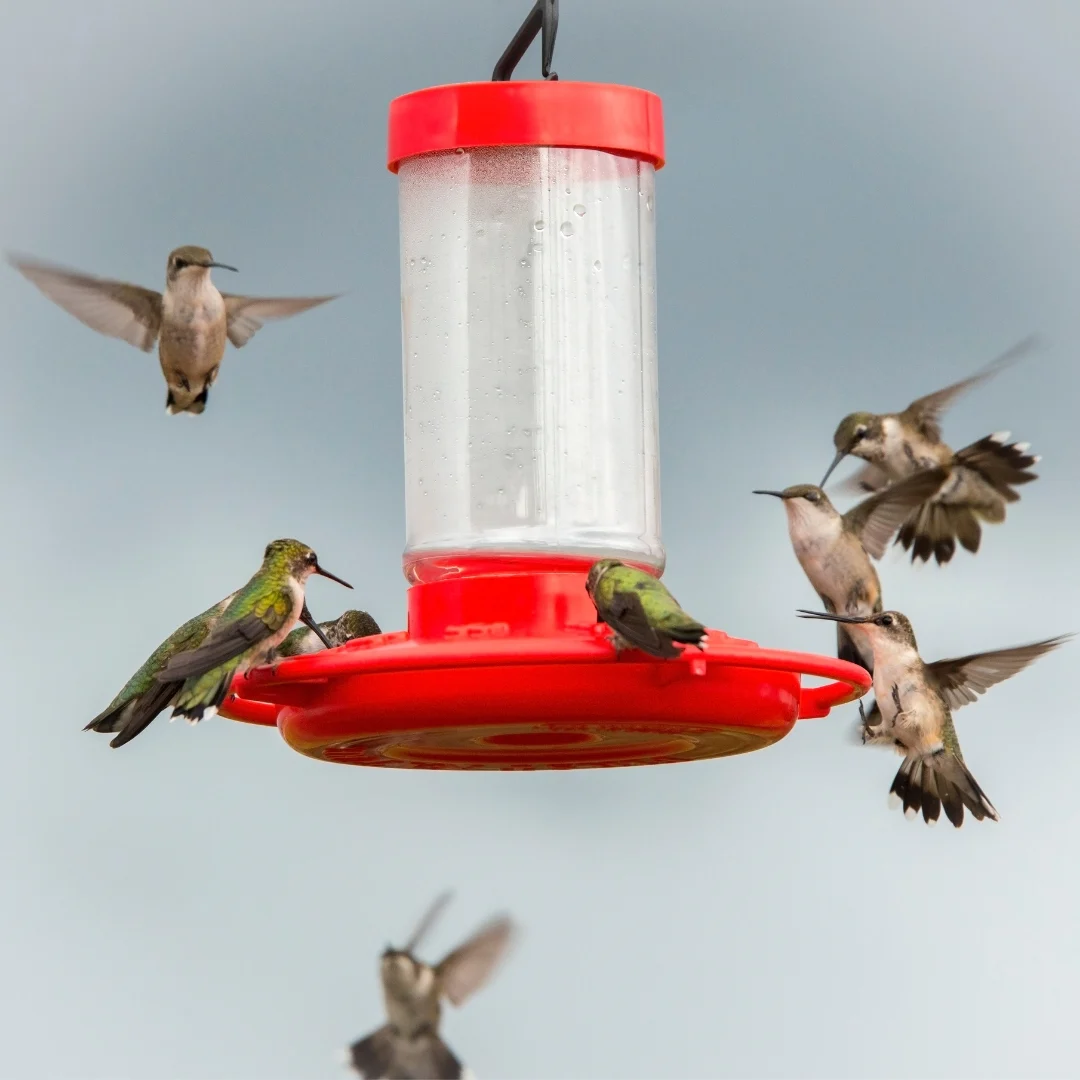
If you insist on buying premade nectar, try this one instead. It's free of dyes and has added electrolytes hummingbirds need.
How to Clean a Hummingbird Feeder
After about a week, the nectar in your hummingbird feeder can start to go bad. Mold can build up in the crevices, driving away your feathered friends or even making them sick. The best hummingbird feeders are easy to clean, so you can put them back out quickly.
Here are the basic steps to clean a hummingbird feeder:
- Empty the feeder and take it apart.
- Soak the feeder in warm, soapy water (I use Dawn dishwashing soap).
- Use an old toothbrush to scrub the inside of each feeding port.
- Scrub the inside of the glass with a bottle brush.
- Rinse all the parts and allow to dry before reassembling.
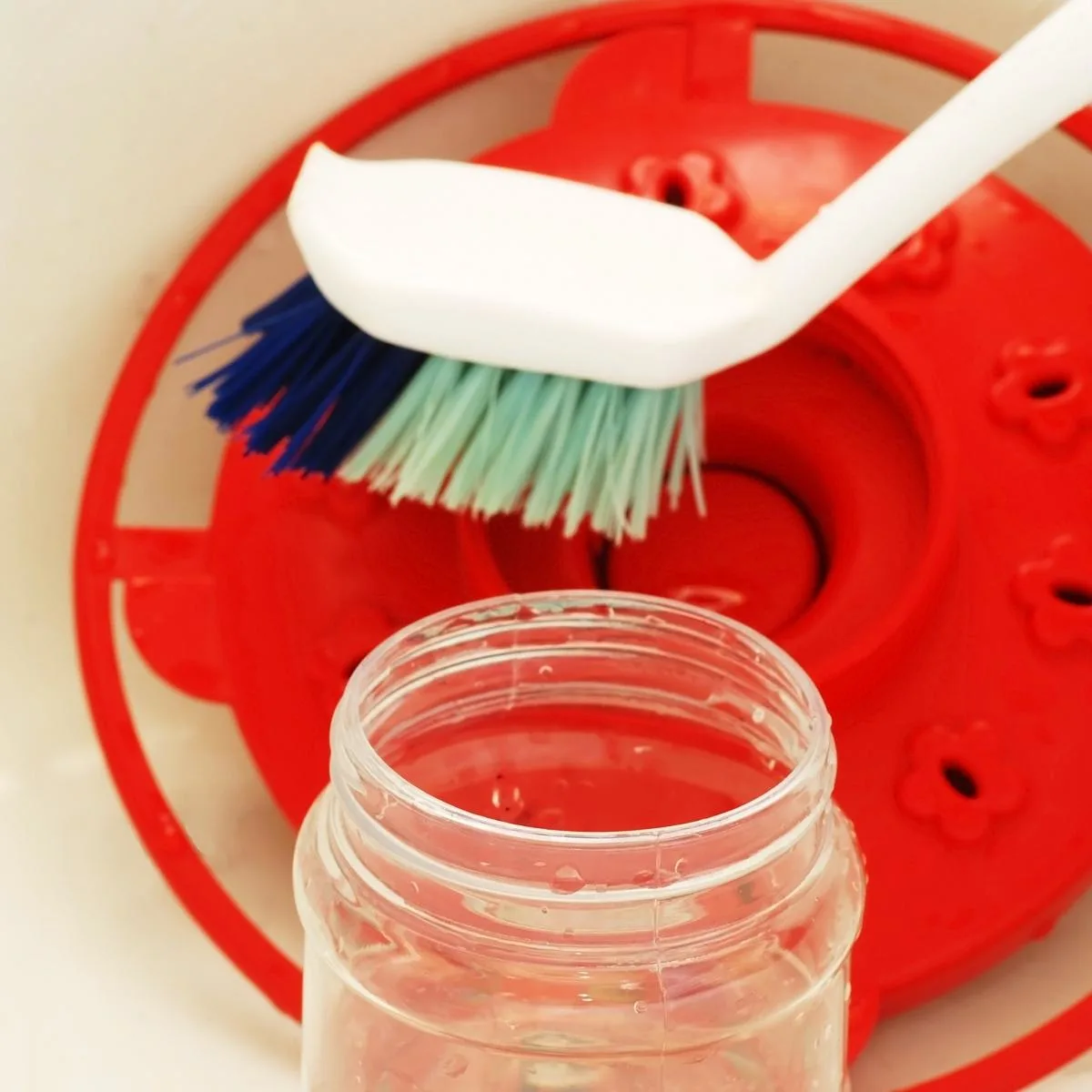
Depending on your feeder, you may even be able to stick it in the dishwasher. Just make sure it won't melt!
When to Put Out Hummingbird Feeders
Many species of hummingbirds migrate like other birds, and they spend their winters in Central America before heading back north in spring. You can check this hummingbird migration map to see when your local species has left their winter homes and are headed in your direction.
Start putting out half-full feeders in mid-March to help out the early birds (pun intended). This way, you don't waste a lot of sugar water if it sits uneaten all week. Make sure to brush off any snow covering the feeding ports so a hungry hummingbird doesn't fly away disappointed!
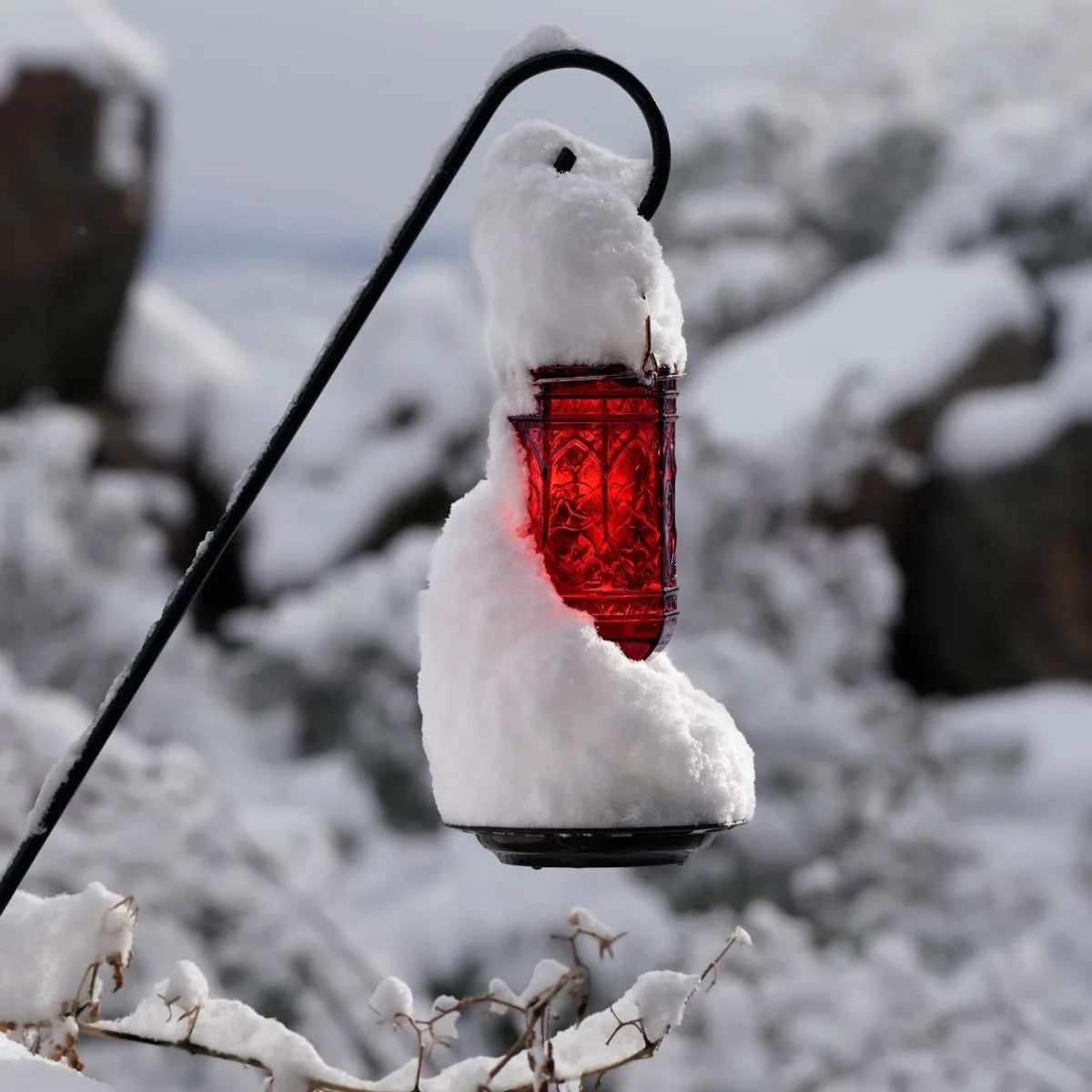
Once the weather warms up and flowers are blooming, you can leave the hummingbird feeders out all summer long. Repeat the process in reverse in late October to give the stragglers a last meal before they head south.
Some species of hummingbirds stick around all winter long! Anna's Hummingbird stays in the Pacific Northwest year round, and relies on feeders and insects to survive our mild winters. When the temperatures dip below freezing, add a heater or wrap the tube in incandescent Christmas lights to keep the nectar from turning to ice.
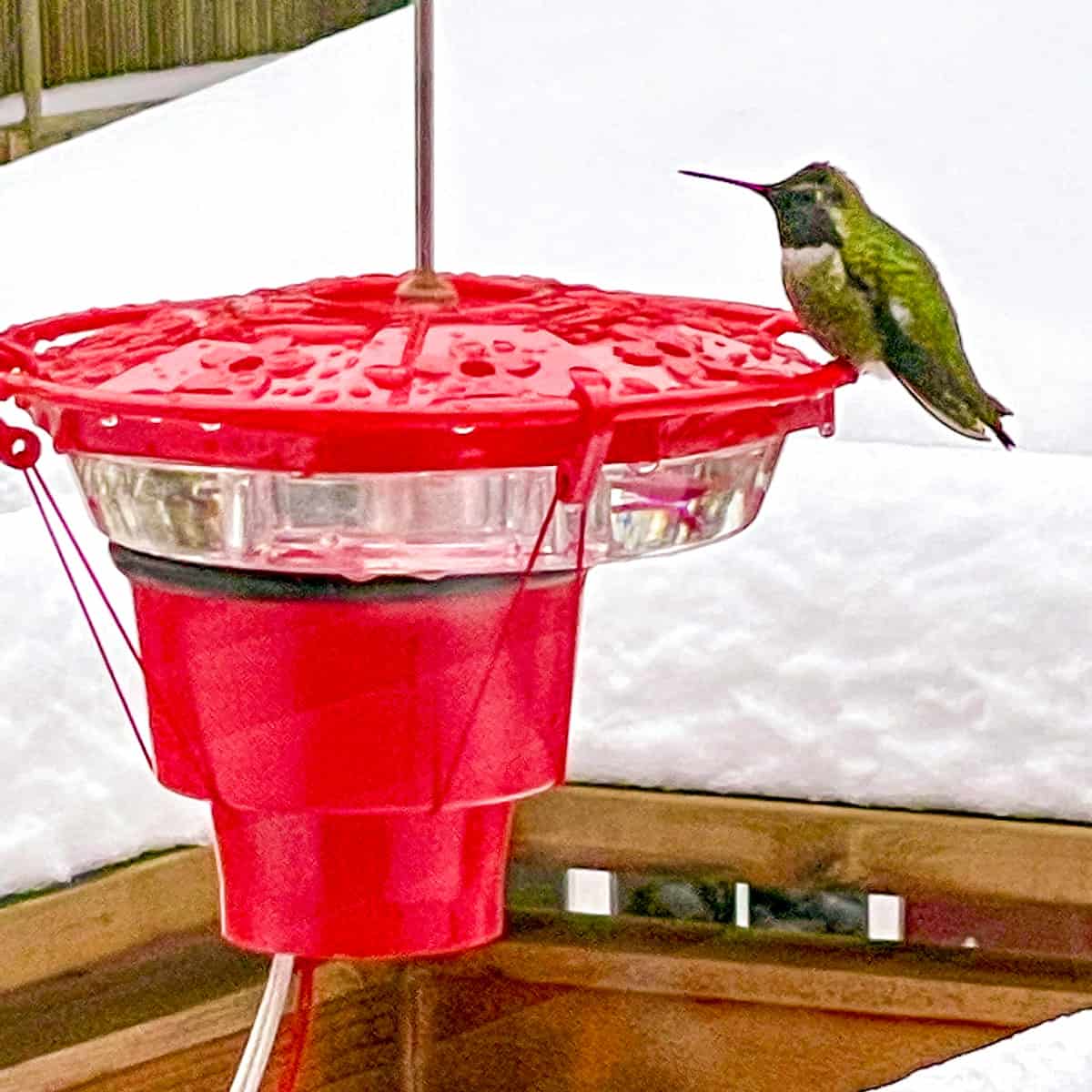
We use this hummingbird feeder heater to prevent the sugar water from freezing, and it works great. There was a constant stream of hummingbirds arriving during one snowstorm!
Hummingbird Baths
Hummingbirds don't like deep, stagnant bird baths, so make sure yours has a shallow area and moving water. Some birdbaths are made specifically for hummingbirds, although the shallow pans mean you will need to refill them frequently.
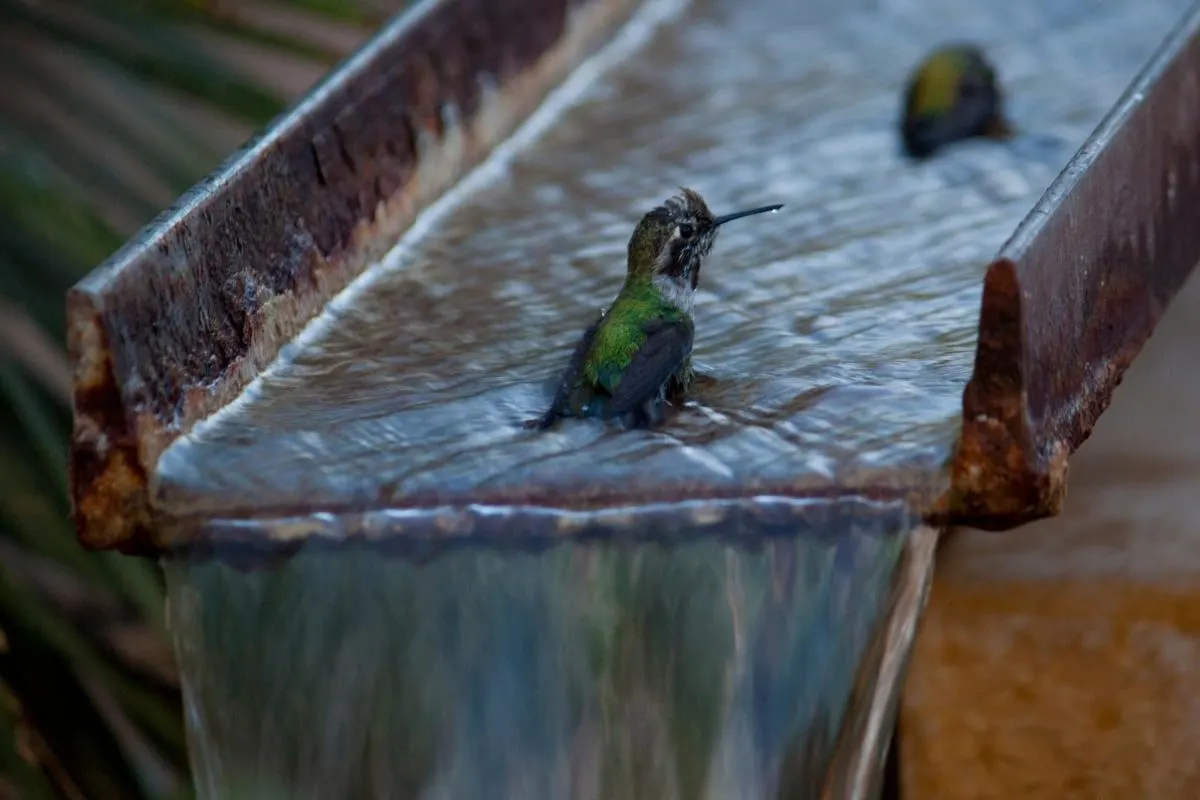
Another option is to add misters around the garden. Position the misters by the leaves of plants so that the water will glisten, attracting the hummingbirds. They then rub against the wet leaves to bathe.
Or combine the two elements to create the ultimate hummingbird bath! This video by Amazing Bird Stuff makes me want to build one right away! You can find the tutorial here.
Hopefully these tips will help you attract hummingbirds to your garden this year! We're lucky enough to have a few that have taken up permanent residence at our house and have claimed my garden as their own!
Check out these other garden tips!

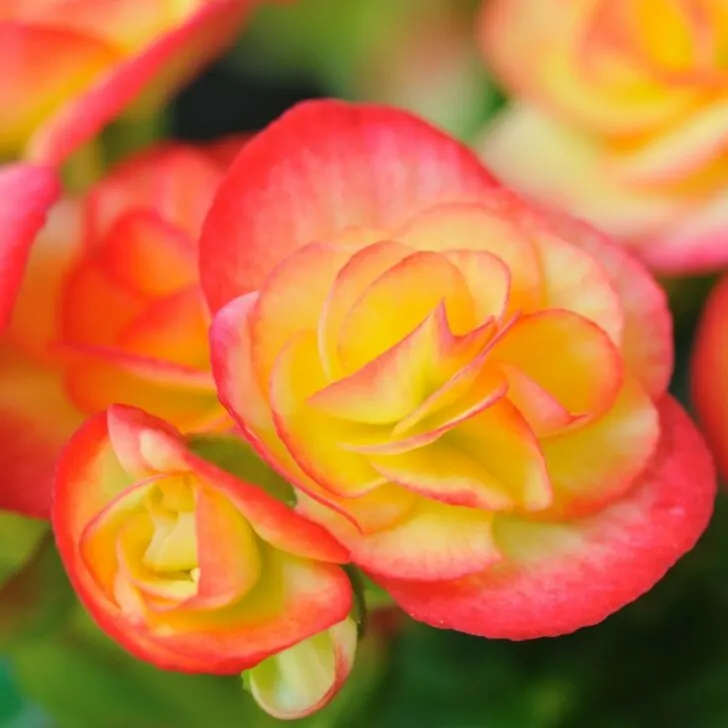
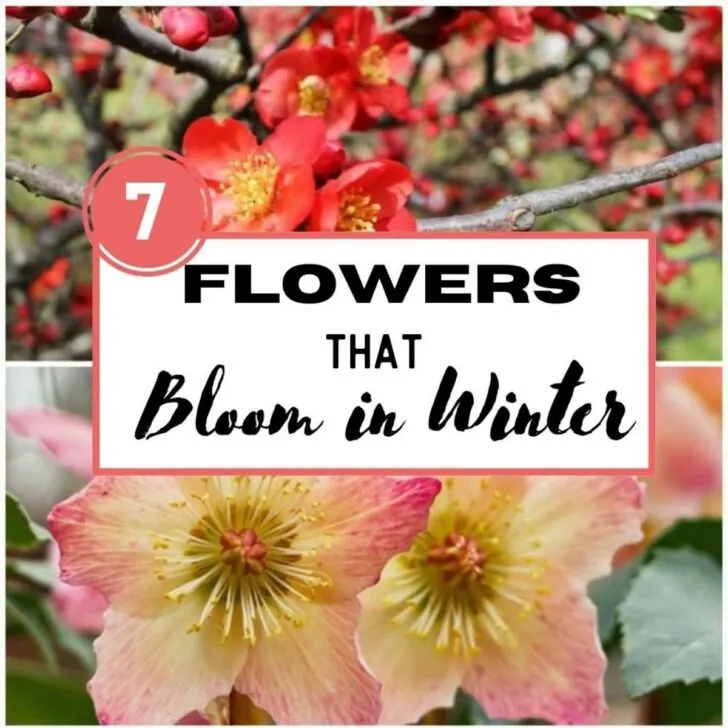
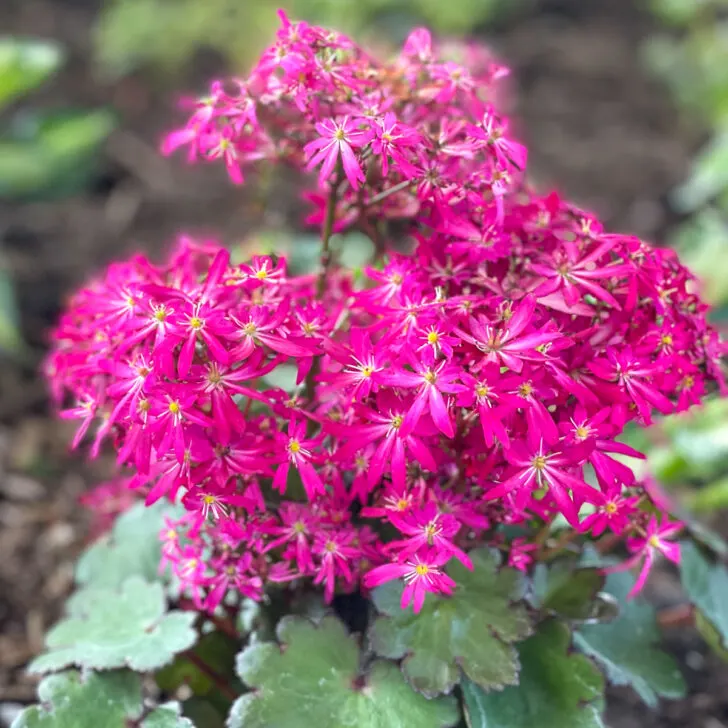
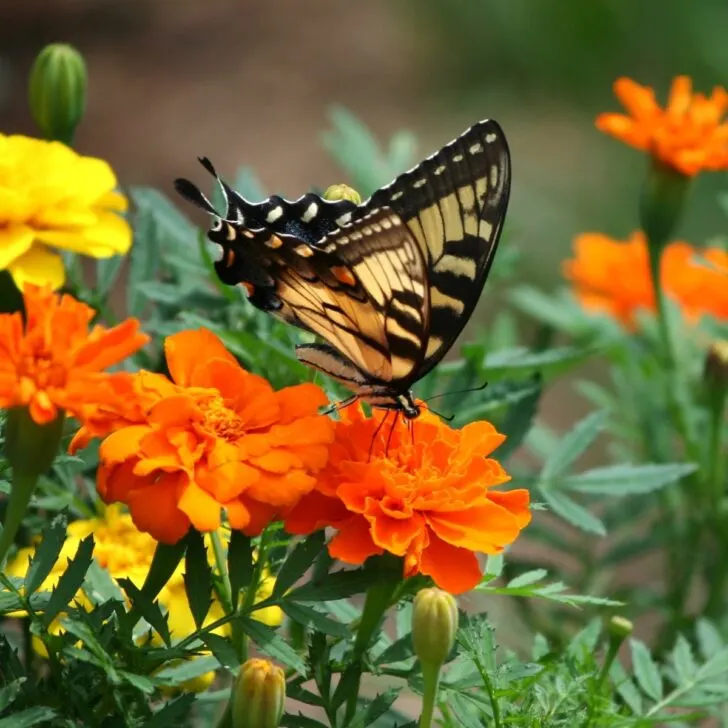
Clara Reeves
Monday 24th of April 2023
Thank you for all the information about Hummingbirds